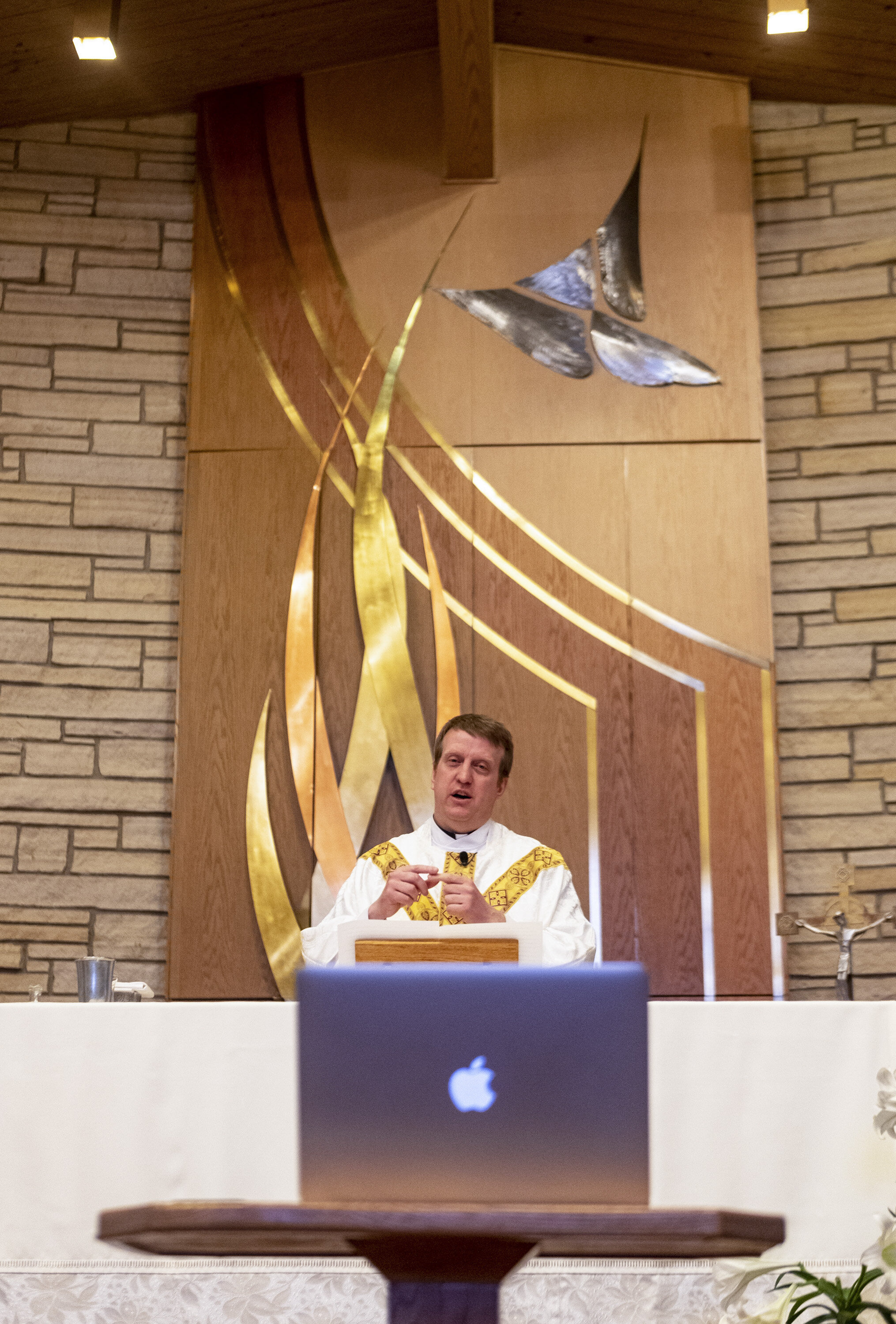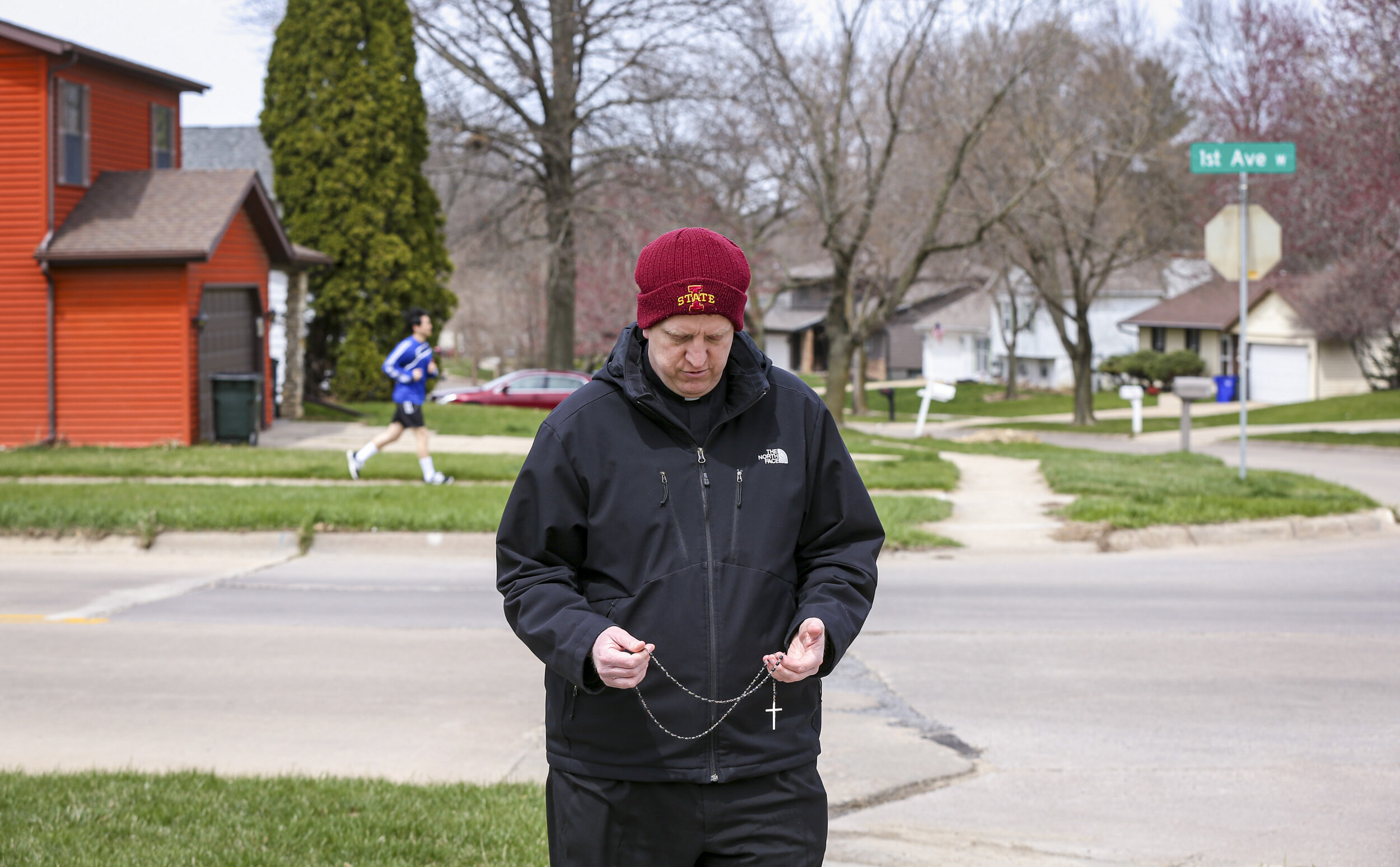
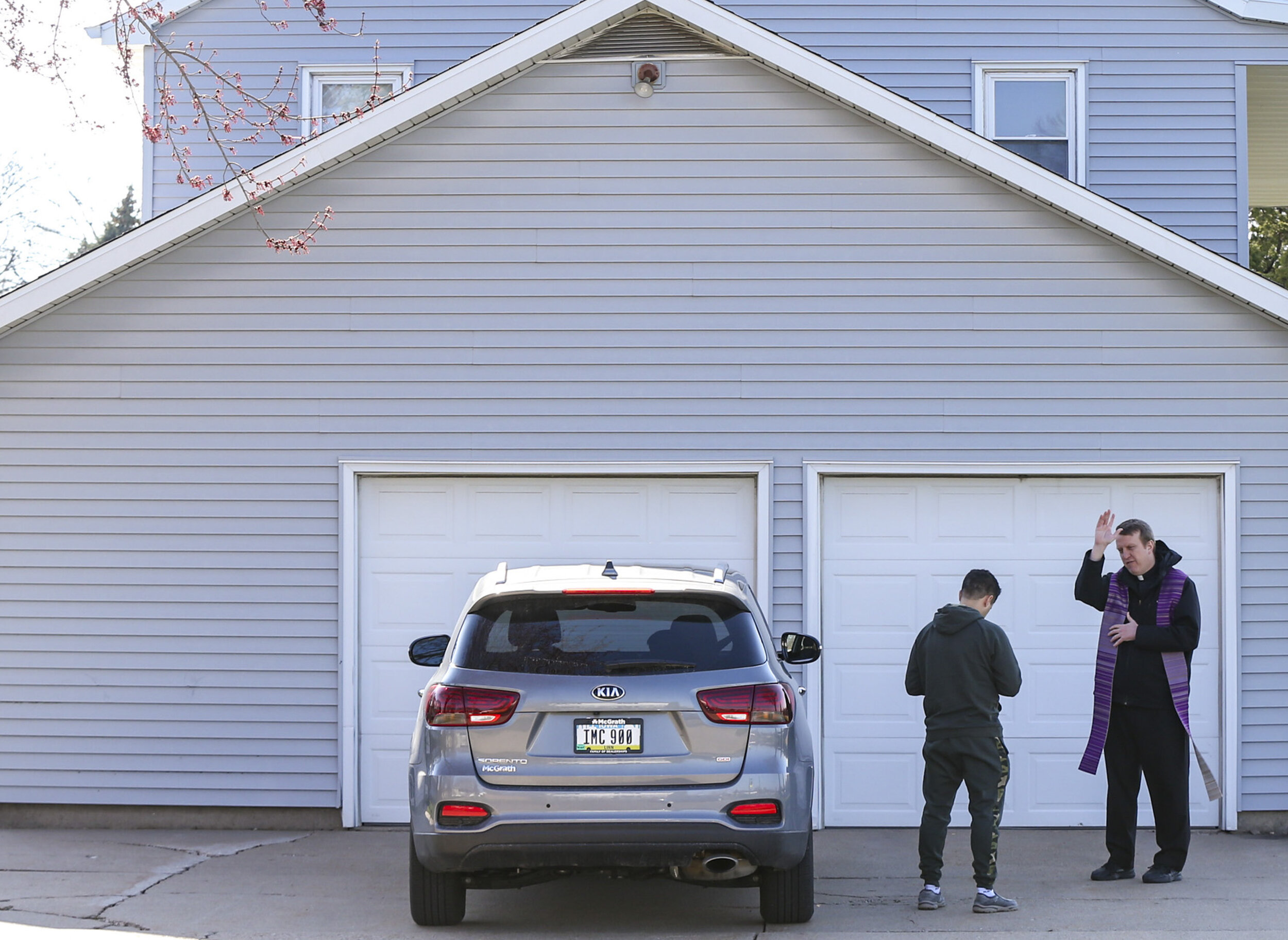
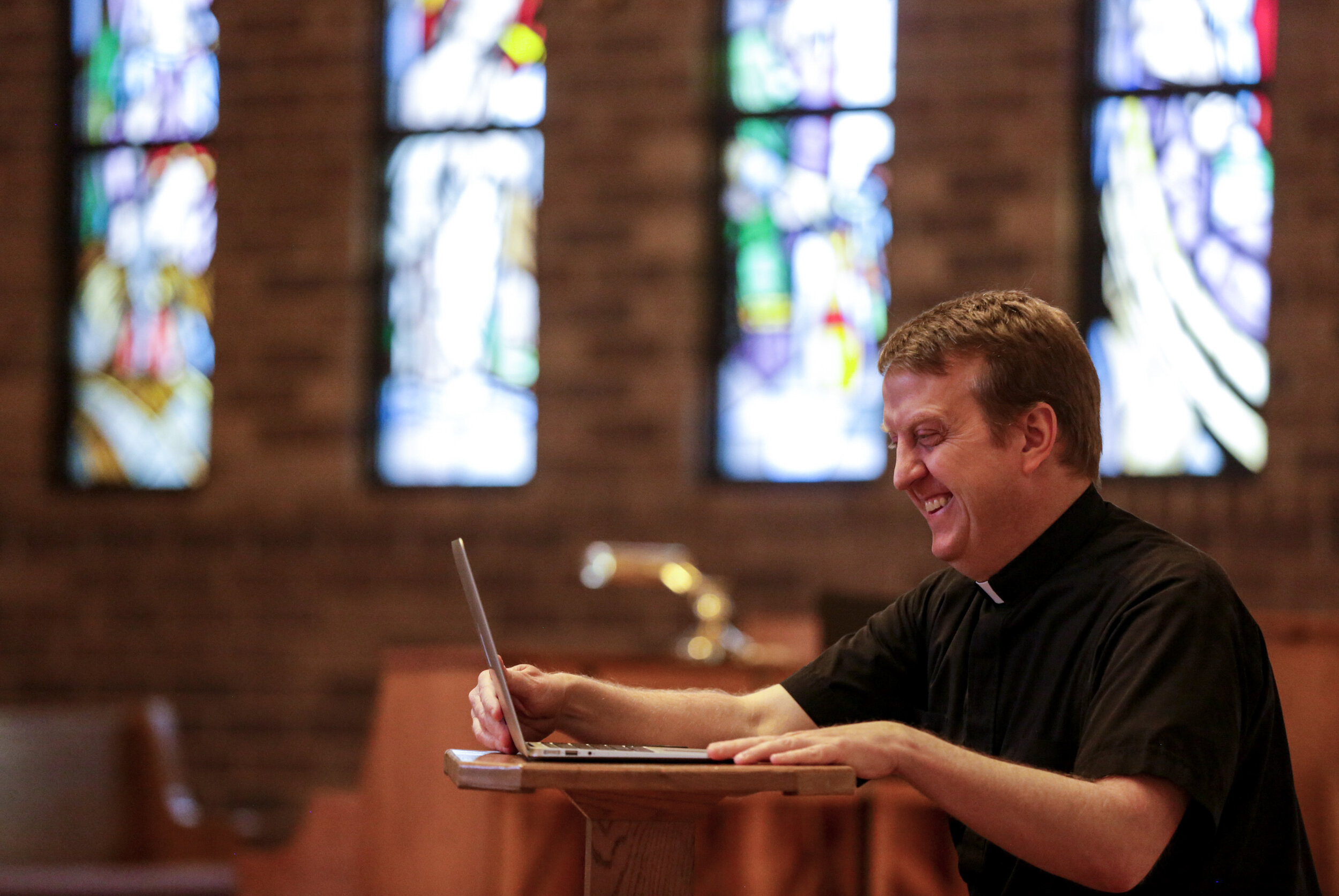
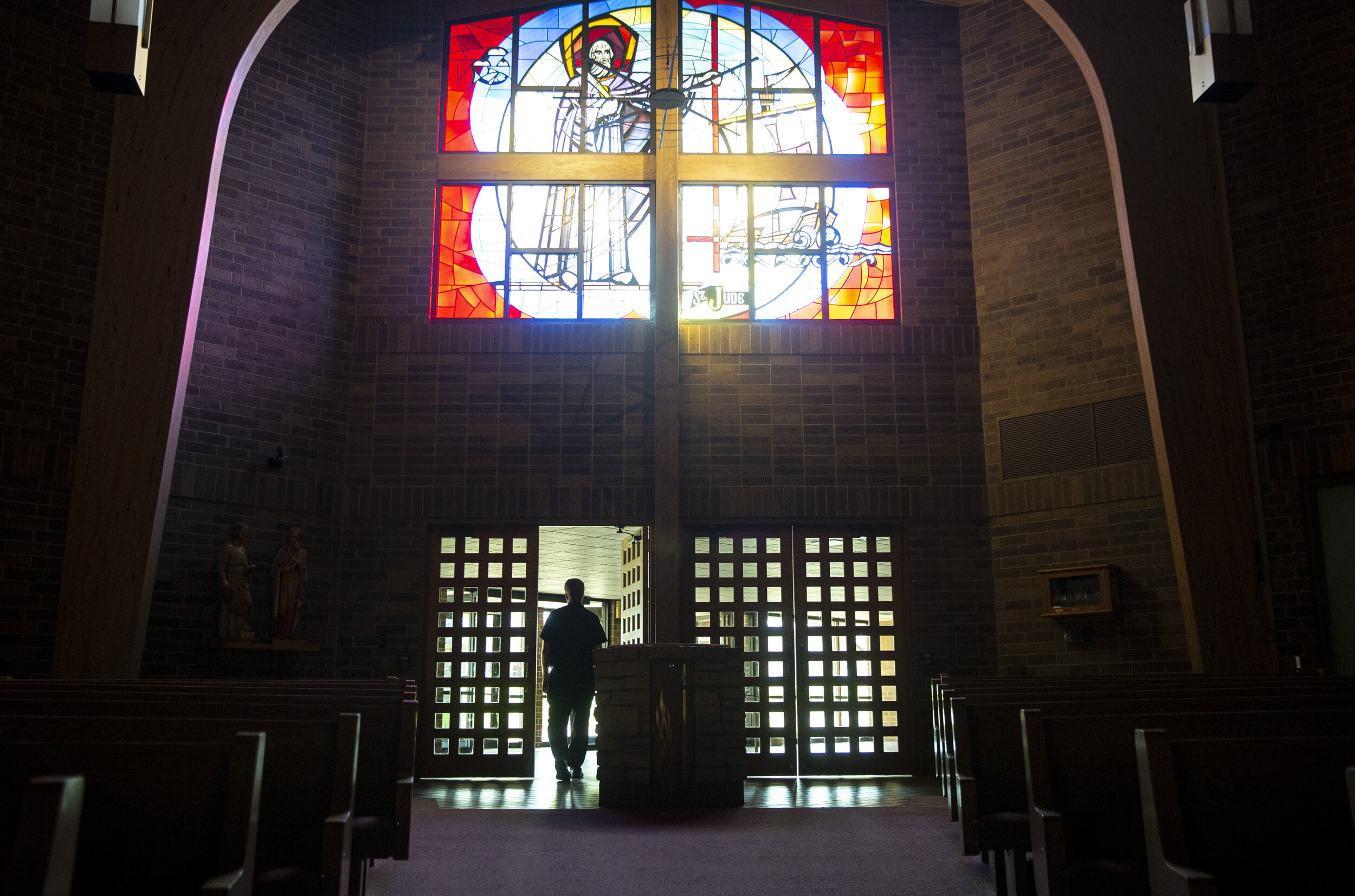


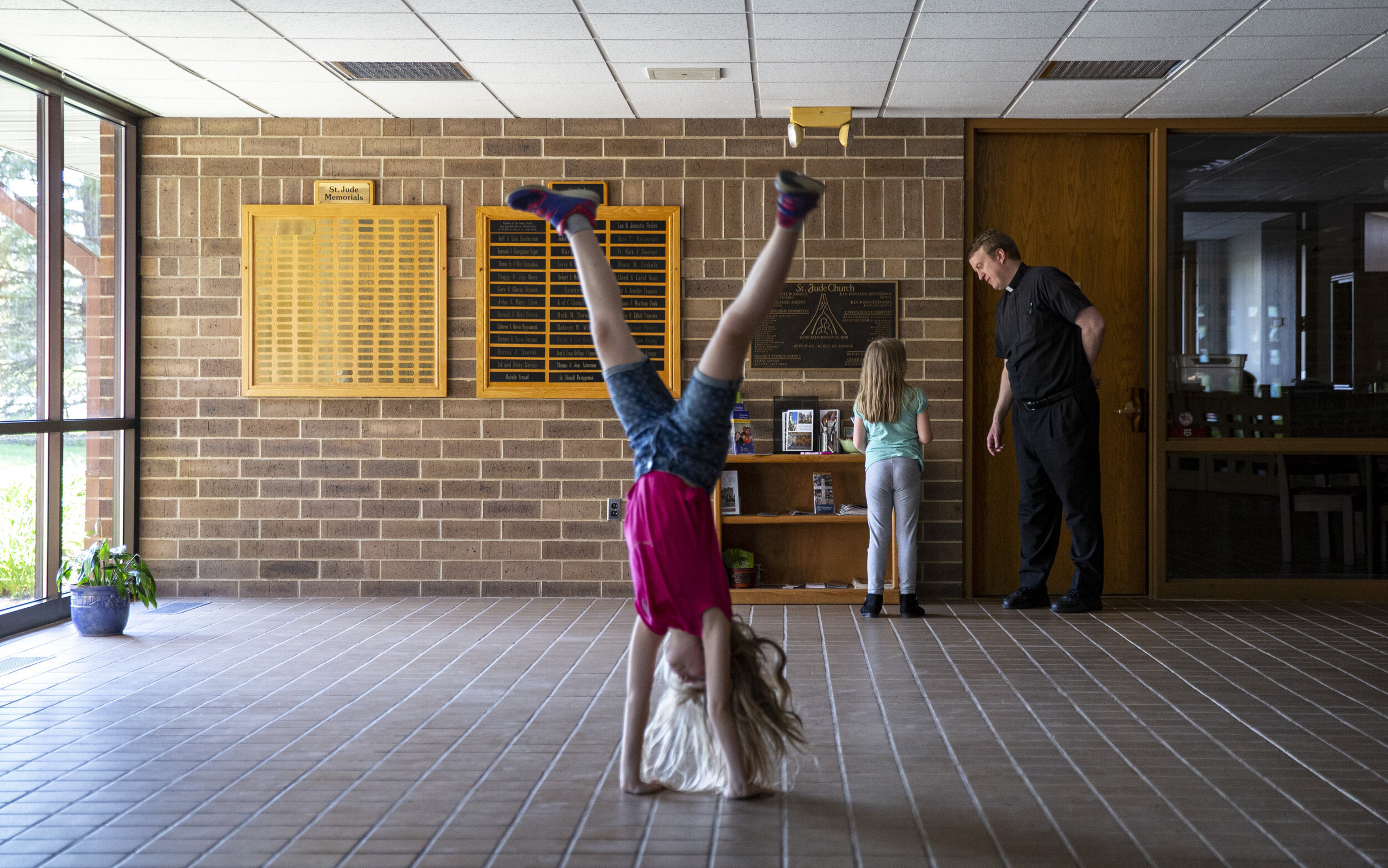

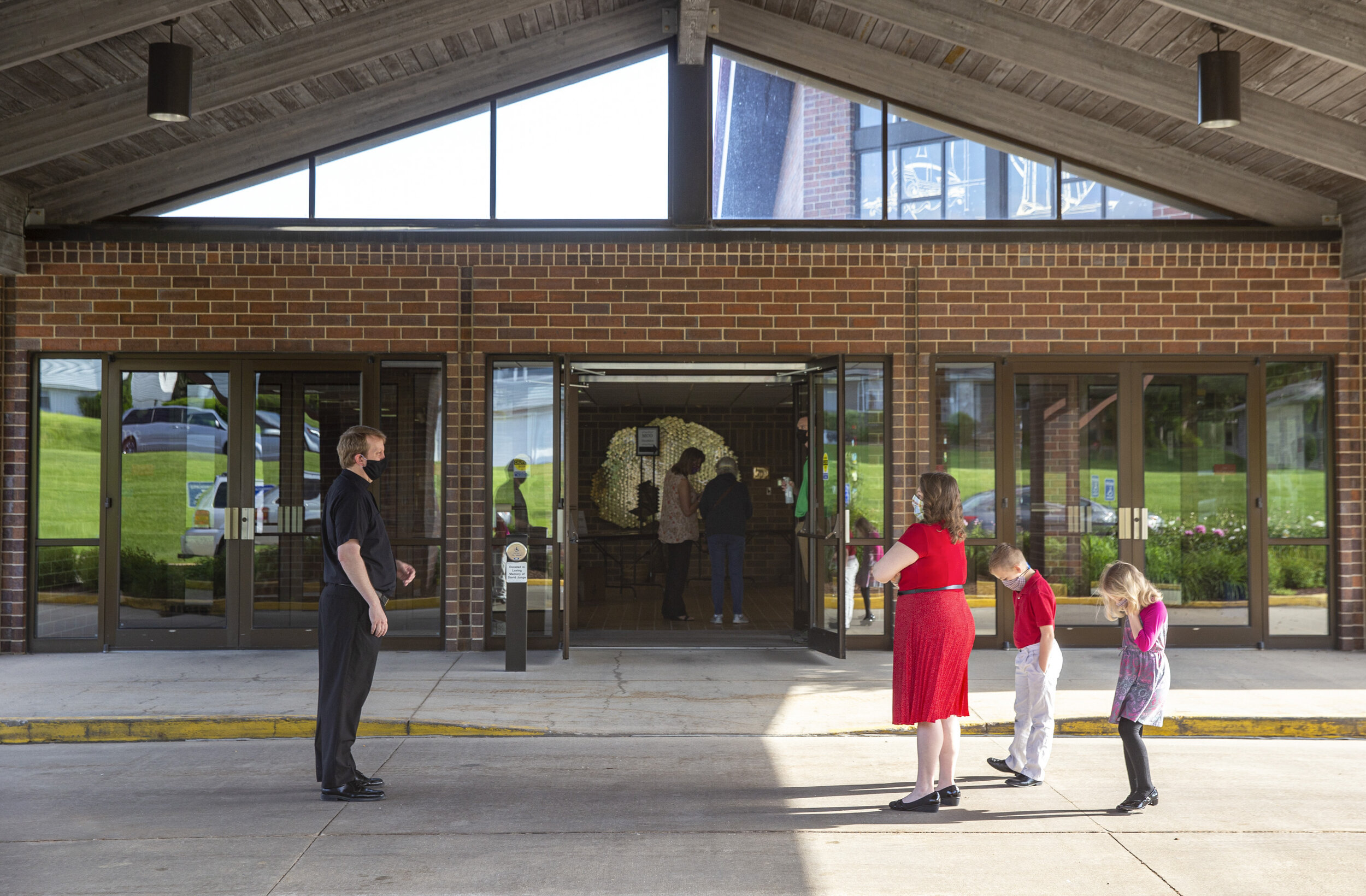
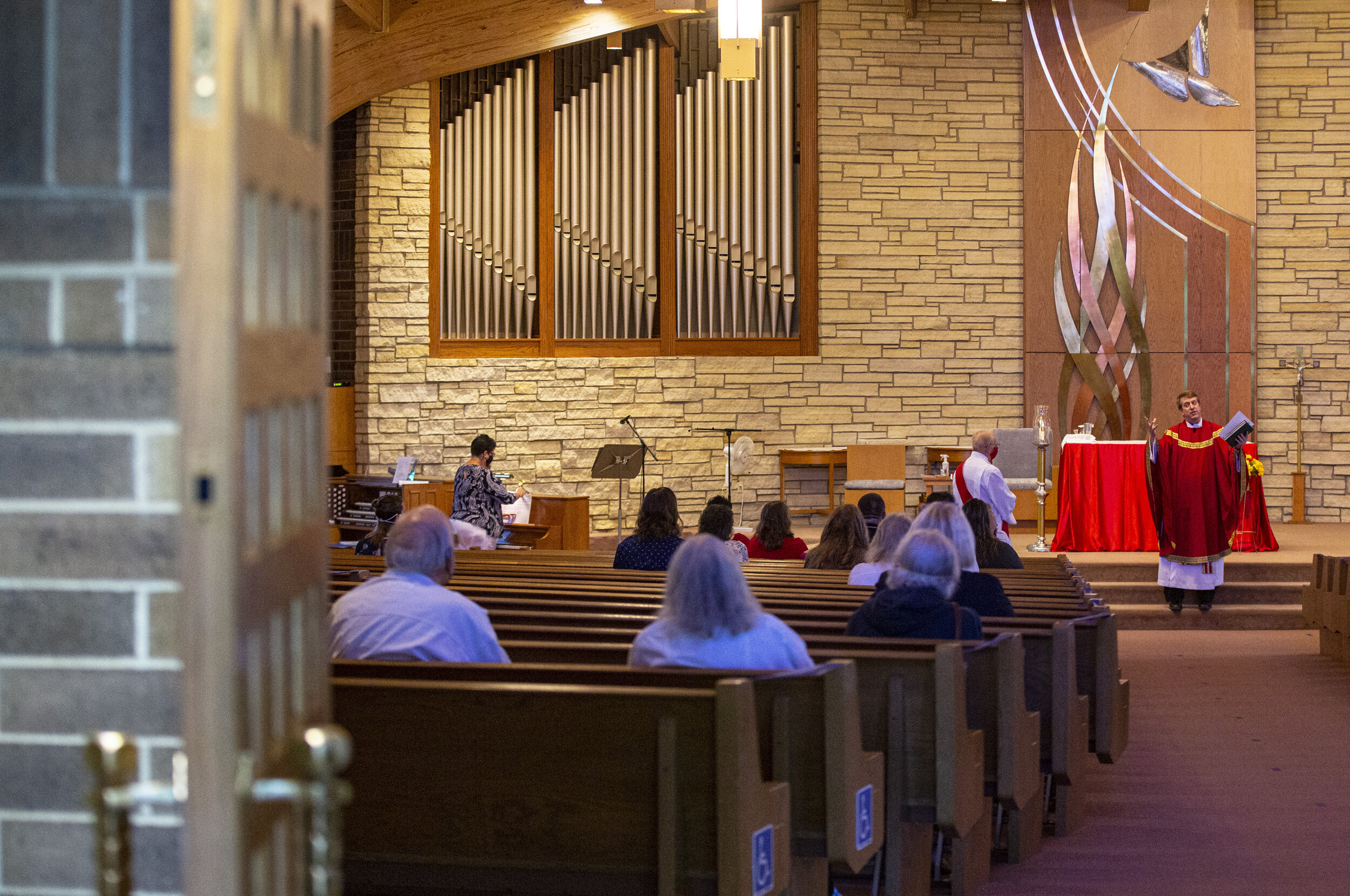
Priest in a pandemic
by Andy Abeyta
On a Saturday evening at the end of May, the Rev. Mark Murphy sat in the front pew of his church after completing the first public Mass since St. Patrick's Day.
It was the first weekend the Archdiocese of Dubuque was allowing its parishes to resume public Mass, after Gov. Kim Reynolds had earlier eased for churches her emergency health restrictions meant to slow the spread of COVID-19.
About 60 parishioners came to St. Jude's Catholic Church in Cedar Rapids that night, a fraction of the regular crowd.
All had gone well as everyone seemed to understand and respect the church's new norms.
Still, Murphy said he felt awkward. Everything was different.
Earlier in his homily, Murphy had described the vision he initially had of his congregation's return to public Mass.
'I thought it would be something like Christmas or Easter,' he explained. 'The place would be packed, the choir would be rockin', we might have a few instruments — there'd be a lot of energy, there'd be great crowd.
'But instead,' Murphy paused, 'we've taped off pews, told people to wear masks. We say 'don't sing,' we say 'don't touch, don't go there,'' he continued. 'Don't even think about coughing.'
Murphy went on to ask his parishioners to think: What could they do in the subdued celebration they found themselves in? What fresh start or change could they bring forward?
Throughout the closure of his church, Murphy and his staff had embodied the latter question in their service to their community.
Among other new practices, masks, service books and meals were delivered; a livestream of his Mass was born; confessions were held outdoors and he prayed for the sick daily at a nearby long-term care facility, Heritage Specialty Care.
As Americans look toward returning into society, faith leaders, too, are discovering a new normal. Many of them, like Murphy, have spent time adapting to serve their own communities.

